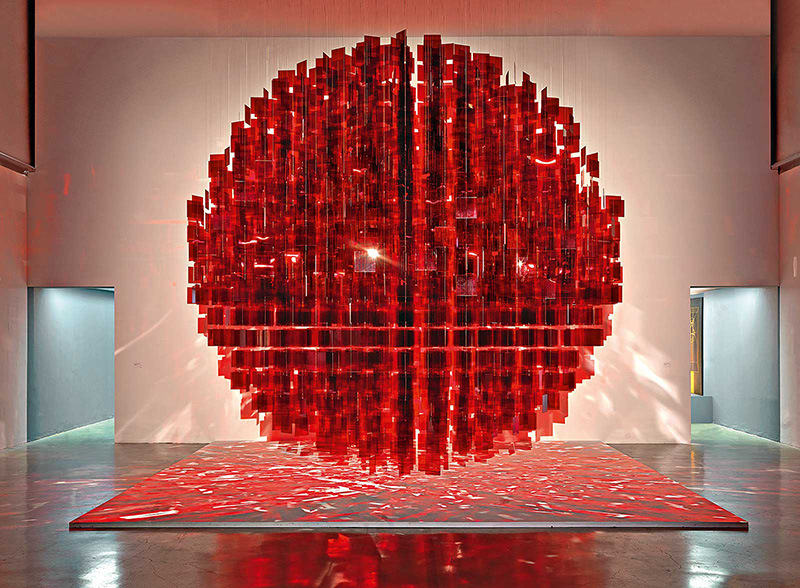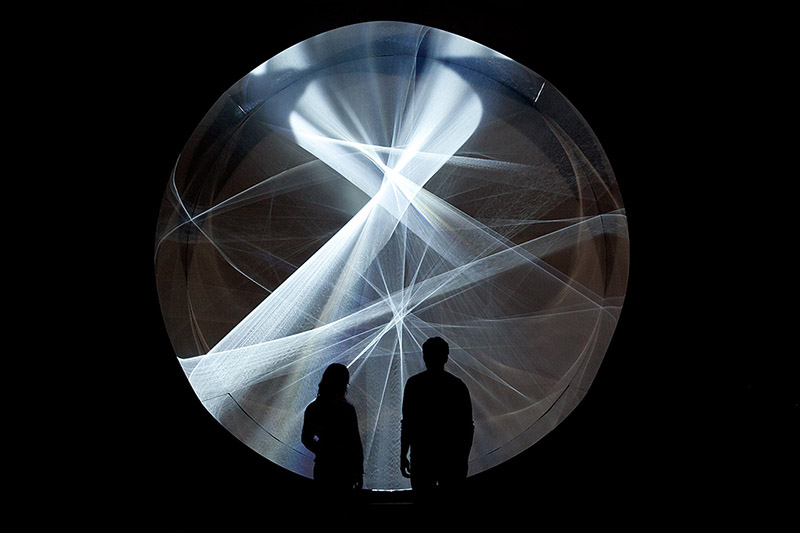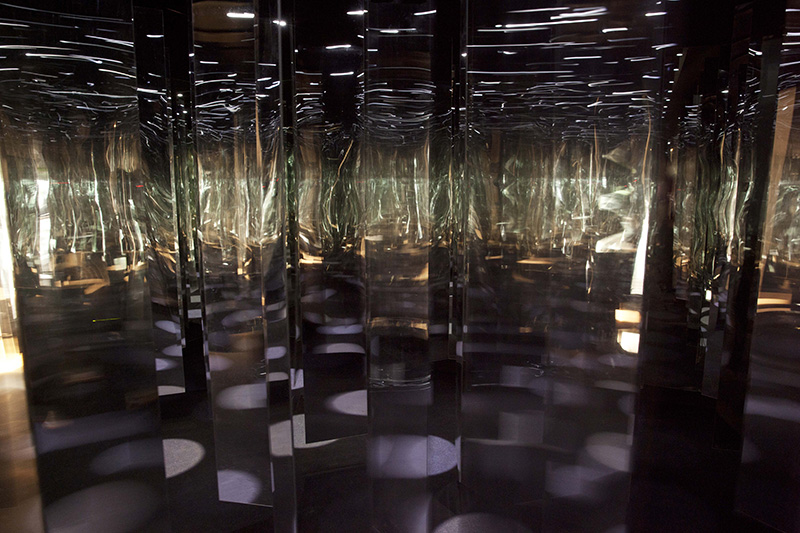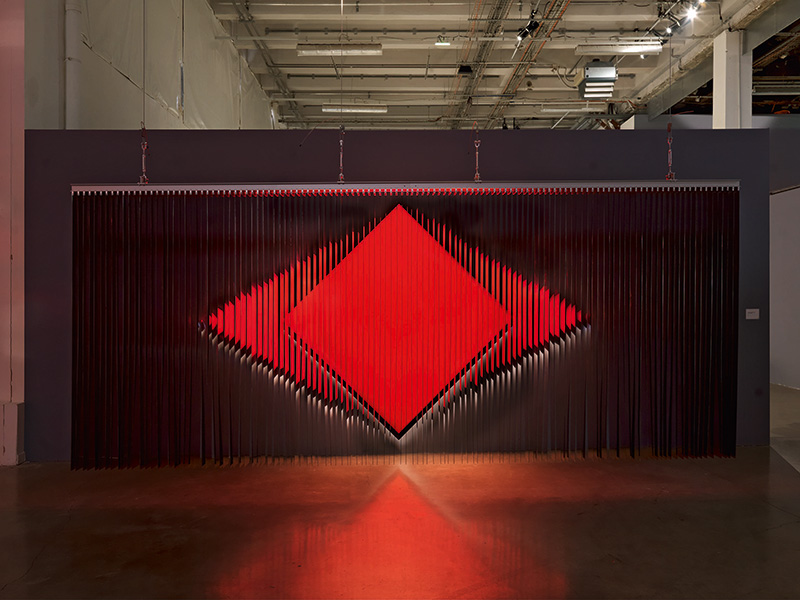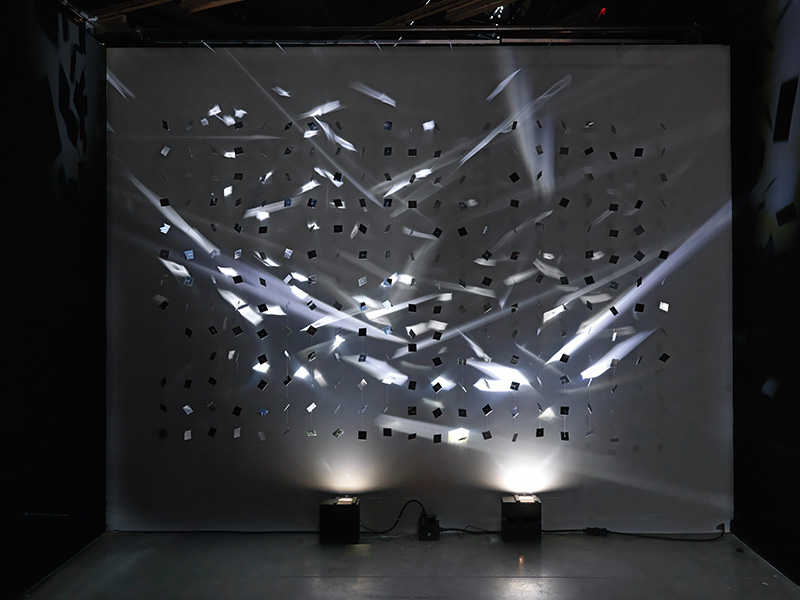ART CITIES:Miami-Julio Le Parc
 Born in Argentina, Julio Le Parc settled in Paris in 1958. A year later, he co-founded the Groupe de Recherche d’Art Visuel. Julio Le Parc’s work explores questions of movement, light and optics, as well as the relations between art and beholder. A fighter of human rights, he worked on numerous collective anti-fascist projects, many of them attacking the dictatorships of Latin America.
Born in Argentina, Julio Le Parc settled in Paris in 1958. A year later, he co-founded the Groupe de Recherche d’Art Visuel. Julio Le Parc’s work explores questions of movement, light and optics, as well as the relations between art and beholder. A fighter of human rights, he worked on numerous collective anti-fascist projects, many of them attacking the dictatorships of Latin America.
By Efi Michalarou
Photo: Pérez Art Museum Miami Archive
Julio Le Parc’s solo exhibition at Pérez Art Museum Miami (PAMM), is a long-overdue exploration of his central role in the history of the art in the 20th Century, entitled “Form into Action” features 100 works that spark a variety of visual and physical experiences. Including major installations and rarely seen works on paper and archival material. Julio Le Parc’s innovations in the fields of light, movement and perception were central to the Op and Kinetic Art Movements, while his theories of immediacy and spectatorship as a vehicle for social and political change continued to inform the Parisian Avant-Garde from the ‘60s on. The exhibition is divided into three thematic sections. The first, “From Surface to Object”, gathers early works on paper and paintings to show Le Parc’s use of color as a means of destabilizing the two-dimensional surface. On display are early 1958 two-dimensional serial ink and gouache on paper studies, as well as paintings from 1959 to the present. Also on view is the monumental “La Longue Marché” (1974), a suite of 10 vibrant paintings flowing around a specially designed rotunda display. In the next section, “Displacement; Contortions; Reliefs”, Le Parc’s revolutionary labyrinthine installations are displayed. First shown as part of GRAV’s participation at the 1963 Paris Biennale, the sequence of three light-infused rooms offer the viewer a powerfully disorienting sensorial experience. The last section, “Play & Politics of Participation” dissolves the physical and ideological walls separating the viewer, the work of art and the institution. A precursor to the Relational Aesthetics movement, this period of Le Parc’s career considers how art can encourage a new awareness of one’s social space. Julio Le Parc attended the Escuela de Bella Artes in Buenos Aires in 1943. He immigrated to Paris in 1958, where he was central to the Groupe de Recherche d’Art Visuel GRAV). At the same time hs conducted his own experiments with light, creating his first mobiles from small pieces of Plexiglas, which were connected and suspended from the ceiling. He also created light-based works, using projectors to play with rhythms of light and sound. In 1966, he received the Grand Prize in Painting at the 33rd Venice Biennale. Le Parc’s participation in the May 1968 Paris uprising and union rallies led to his expulsion from France, but returned to Paris a few months later following the protests of French artists and intellectuals. Upon his return to Paris, Le Parc became an important conduit between activist Latin American artists and the Paris art scene.
Info: Curator: Estrellita B. Brodsky, Artistic Advisor: Yamil Le Parc, Pérez Art Museum Miami, 1103 Biscayne Blvd, Miami, Duration: 18/11/16-19/3/17, Days & Hours: Mon-Tue & Fri-Sun 10:00-18:00, Thu 10:00-21:00, www.pamm.org

